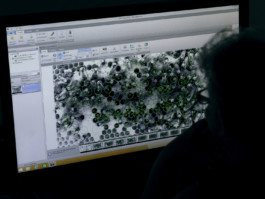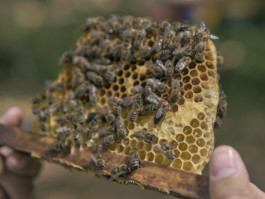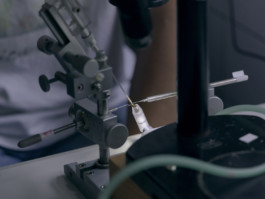Institute for bee science
— In Hohen Neuendorf, close to the city boundary of Berlin, the "Länderinstitut für Bienenkunde" (Institute for bee science) is located. The scientists study the behaviour of the bees, or analyse the composition of the honey that amateur beekeepers send them.


— The scientist studies the bees' behaviour and movement. They also search for a solution in the fight against the varroa mite. The mite lives as a parasite on honey bees and develops and reproduces in the capped brood in the hive.





— The preparations of the queen bees' artificial fertilisation




— A hornet's nest

— Some of the more than 300 bee hives at the institute


— The queen bees are marked with a little number on their back.

— Amateur bee keepers send their honey to the institute to let i be analyzed in the laboratory. The packaging material of the numerous post sendings are stacked in a corner of the lab.







— Before the artificial fertilisation the queen be gets anaesthetised. The process of the fertilisation is very short.
Institute for bee science
— 2018


Institute for bee science
— In Hohen Neuendorf, close to the city boundary of Berlin, the "Länderinstitut für Bienenkunde" (Institute for bee science) is located. The scientists study the behaviour of the bees, or analyse the composition of the honey that amateur beekeepers send them.

— The scientist studies the bees' behaviour and movement. They also search for a solution in the fight against the varroa mite. The mite lives as a parasite on honey bees and develops and reproduces in the capped brood in the hive.





— The preparations of the queen bees' artificial fertilisation




— A hornet's nest

— Some of the more than 300 bee hives at the institute


— The queen bees are marked with a little number on their back.

— Amateur bee keepers send their honey to the institute to let i be analyzed in the laboratory. The packaging material of the numerous post sendings are stacked in a corner of the lab.






— Before the artificial fertilisation the queen be gets anaesthetised. The process of the fertilisation is very short.

Institute for bee science
— 2018
